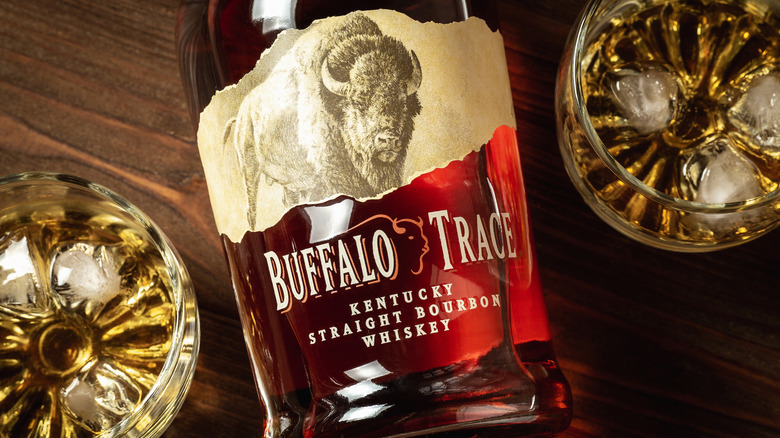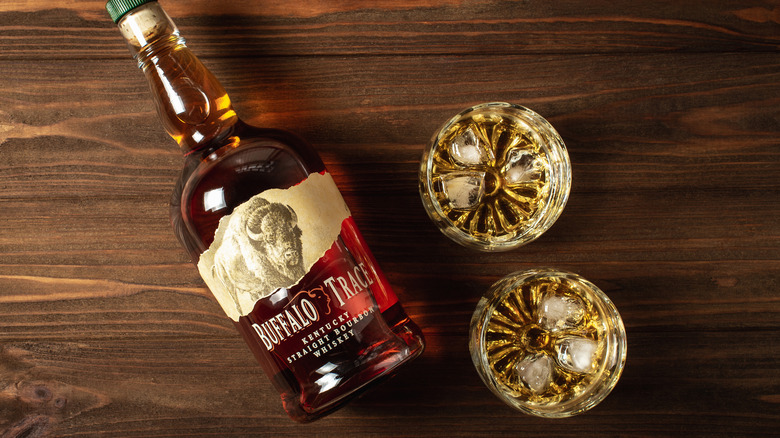The Historic Reason Buffalo Trace Bourbon Finally Settled On Its Name
Bourbon is an American whiskey enjoyed by anyone who loves a stiff vanilla spiced drink to sip on. It is a pretty spirit, ranging in hues of amber and poured into chilled drinking crystals and easily enjoyed before, during, and after supper. According to Food Network, bourbon is protected and regulated by the United States government and must have a mash made of at least 51% corn (what's more American than corn?) and aged oak barrels. Most of the popular brands — including Makers Mark, Woodford Reserve, and Knob Creek — have their origins in Kentucky.
One of the oldest American bourbon distilleries in Kentucky is the Buffalo Trace Distillery. Buffalo Trace is an award-winning brand of bourbon made from corn, rye, and barley malt with notes of vanilla, toffee, and fruit, but the high quality of this brand's bourbon isn't the only notable thing about it. Its name is an ode to the history of American land.
What's in a name?
Buffalo Trace Distillery says that a small but functional distillery was founded in 1858 by a man called Daniel Swigert. In 1870 this building was purchased by a Mr. Colonel Edmund Haynes Taylor, Jr., and from there, multiple people purchased and rebuilt or expanded the distillery. The business was even permitted to continue production during the prohibition era for medicinal purposes, but the Buffalo Trace bourbon brand wasn't always named as such.
Buffalo Trace is admittedly a unique name for a Kentucky-based bourbon company, but according to Vine Pair, it was originally called the Old Fire Copper Distillery, then the politely named George T. Stagg Company (who was the second owner of the business). It wasn't until 1999 that the name was officially switched over to "Buffalo Trace." Why did the owners decide on the switch? Well, it is a call back to early America. Before Europeans colonized the land, buffalo were native to and roamed freely throughout Kentucky. The buffalo traces are what the immigrants followed while they traipsed their way through the New World, hunting, farming, and exploring the unfamiliar terrain.

